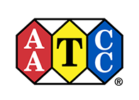Fossil-free fashion: Utopia or realistic target?
Posted on 06/09/2021

In its recent report, Environmental campaign group Stand.Earth released its first ‘Fossil Free Fashion Scorecard’ report which assesses 47 fashion brands' efforts on climate change and concludes that most are failing to take effective action to eliminate fossil fuels and reduce greenhouse gas emissions from manufacturing, materials and shipping.
There is no denying that the textile industry still relies heavily on fossil fuel. When it comes to colors and functional effects that the consumer is expecting from their favorite brands, well, these are by definition made from petroleum-based raw materials.
Or are they?
For the main part: yes, we simply don’t have technology available to date that can replace all of the ingredients that are needed to make color long-lasting, sportswear odor-free, or medical textiles barrier-protected against bacteria and viruses.
Is there any hope?
Of course there is. Specialty chemical leaders like Archroma are sparing no efforts and money to develop fossil-free alternatives that can do the job in the scale that is needed to .
In only a few years, we have developed EarthColors®, a range of dyes synthesized not from petroleum based raw material but from plant waste left over by the agricultural and herbal industry. These have been already featured by brands like G-Star, Esprit or more recently, Primark.
In the area of coating binders for applications such as tea bags, coffee filters or other non-woven applications, we have recently introduced Appretan® NTR, a range of water-based polymeric binders based on renewable natural ingredients.
For fluorine free(1), durable water repellency, and luxurious durable softness, selected Smartrepel® and Siligen® products are created from renewable, plant-based raw materials.
One step beyond…
And we go one step further beyond the ingredients we use. We design holistic systems and solutions that look at the entire process of textile production and aim to reduce the use of resources, in particular energy consumption. Using our ONE WAY impact calculator, when used by our customer as defined by the system, compared to an industry benchmark, we are able to estimate the resource savings.
For our most popular systems, DEEP DIVE and DARK BLISS, we are talking of energy savings in the range of respectively up to 34% and 41%(2).
In total we estimate that in the past 10 months we have allowed our customers worldwide to save >380,000,000 MJ(2) of energy with our resource saving systems! Which translates into an emission reduction of 22,000 to 43,000 MT CO2(2) (depending on the fuel used in the boiler and with only 80% boiler efficiency).
These energy savings can have tremendous positive impact in countries that rely on fossil-based energy, which is unfortunately the case in many countries where textile and fashion manufacturers are based. In addition, although not the focus of this blog post, the same systems have reduced >800,000,000 L(2) water in the processing of cotton knits.
Clearly, there is more work to be done, yet we can hope that there will be more progress towards alternatives developed by Archroma and others along the way towards #fossilfreefashion!
(1) Below limits of detection according to industry standard test methods
(2) when used by our customer as defined by the system, compared to an industry benchmark
ABOUT THE AUTHOR:
Based in Singapore, Paul Cowell is our Global Head of Brand & Performance Textile Specialties Competence Centers & Brand Studio. He has been working in the textile industry for more than 30 years. He is passionate about textile, fashion, and making them safer for our planet and its inhabitants.
Affiliations & memberships
Archroma are proud members and/or partners with the following organizations









